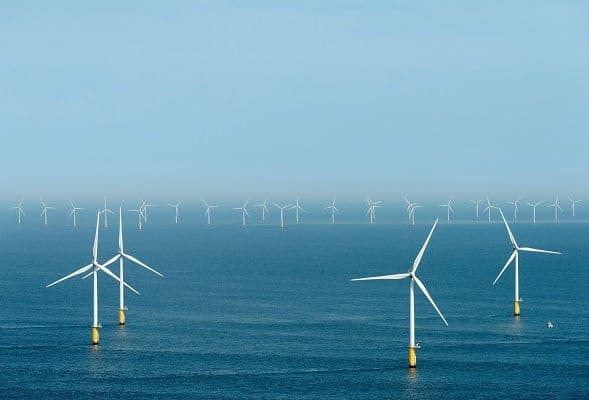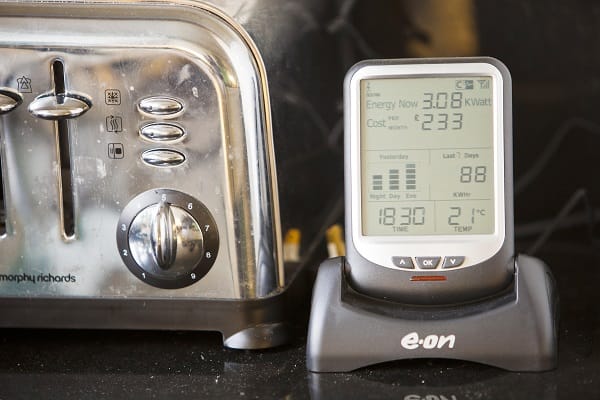At the beginning of 2019 there were reckoned to be just under 6 million small businesses in the UK that were employing fewer than 50 employees. Around 96% of them are classed as micro-businesses, employing fewer than 10 people. In fact, SMEs account for around half of all UK turnover, employing up to three-fifths of the available workforce.
But businesses of this size are unlikely to have the budget or staffing to enable them to employ a dedicated energy resources manager. So finding the best business electricity tariffs & suppliers isn’t as simple as it is for larger concerns.
Calculating small business electricity prices
Business energy suppliers all operate in the same fashion, even though the way they present their bill may vary, you can expect to find the following information on your bills:
Energy Consumption: this shows the amount of electricity that your business has used within a specific time frame
Unit rate: this shows the price that you pay for every kWh (kilowatt-hour)
Standing Charge: this is the fixed sum paid per day to your energy supplier. It covers the fixed costs of supplying the electricity to your business
Billing Period: your electricity bills may be issued monthly, or you may receive quarterly bills, depending on the arrangement you have with your business energy suppliers
VAT: not every business is registered for VAT and the amount will vary according to your industry. For example, charities and not-for-profit organisations usually pay VAT at a reduced rate of just 5%, whereas for the majority of those that pay VAT, a charge of 20% usually applies
Discounts: some cheap business electricity suppliers offer discounts, and most suppliers offer incentives for paying bills via Direct Debit, for example
Postcode: perhaps surprisingly, where your business is located can have an impact on your electricity bills. Each region has its own tariffs which it charges to energy suppliers and this has an impact on overall costs.
Below we have shown some illustrative examples of costs for different types of businesses, see if you’re paying over the odds based on the size and type of business you have.
Average electricity prices based upon size of business
The amount that you can expect to pay for your business electricity consumption can vary quite dramatically according to a number of factors. The size of your business, the number of people that you employ, and the type of service you provide all have an impact on energy costs.
It’s impossible to estimate likely electricity costs for an individual business since so many different factors need to be taken into consideration. But we’ve outlined a few basic business types, to give you a rough idea of what to expect. But remember, these figures are only intended to be a rough guide and shouldn’t be taken too literally.
Micro-business
A micro business is classed as having between 1-9 employees, so in most cases, the overheads are likely to be fairly low. In general terms, you could expect to see an annual electricity usage of around 10,000 kWh. Assuming a daily standing charge of 23.33 pence and a unit charge of 13.21 pence per kWh, that would result in an annual electricity bill of around £1,406.15.
Small business
A small business is classed as having between 10 – 49 employees. Assuming an average yearly usage of 20.000n kWh, with a standing charge of 23.33 pence per day and a unit price of 13.11 pence per kWh, this would result in an annual charge of approximately £2,707.15.
Medium business
When it comes to medium-sized businesses, these are classed as having between 50 – 250 employees. If we assume an average annual electricity use of 40,000 kWh, with a standing charge of 23.09 pence per day and a unit price of 13.11 pence per kWh, the annual cost works out at around £5,328.28.
Electricity usage examples based upon business type
As we’ve already mentioned, it’s not just the size of your business or the number of employees that will determine your exact electricity costs. The type of business that you’re involved in will also have a major impact on the amount of electricity that your business uses. To give some examples of what we mean, we’ve calculated the costs for three separate business types. Although, as before, these figures are only intended as a rough guide, and shouldn’t be assumed to be an accurate basis for your business costings.
Office
Offices can vary from just one or two people working from a small unit to dozens of people working in a much larger space. But in many cases, it’s the energy costs that represent the main area of expenditure, particularly for those businesses which operate almost exclusively online.
A recent report by CIBSE (the Chartered Institute of Building Service Engineers), you can expect a small office-based business to pay somewhere between £5 – £6.50 per year in fuel costs for every square metre of available office space. Approximately 85% of this sum is spent on electricity costs, since gas is rarely used for office-based concerns, except for heating and hot water in some cases.
So for an office with 500m2 of space, assuming energy costs of £6.50 per year per square metre and also assuming that 85% of those costs are taken up by electricity, that would represent annual electricity costs of £2,762.50.
Retail store
When it comes to retail stores, a high percentage of energy costs is associated with keeping the customers and staff comfortable. Light and heating account for the majority of energy expenditure. In fact, the Carbon Trust estimates that the average energy consumption for a retailer stands at around 27,350 kWh per year.
Retail outlets can’t usually take advantage of cheaper off-peak electricity deals since they tend to operate during daylight hours. And it’s not just heating and lighting that needs to be factored in. Many retail stores operate fridges and freezers too, as well as air-conditioning units, all of which increase overall electricity costs.
Let’s assume that a retailer has an annual energy consumption of 27,350 kWh. With a daily standing charge of 23.33 pence and a price per kWh of 13.11 pence, the total annual electricity costs would be £3,670.74, rising to £4,404.89 once VAT has been factored in.
Restaurant
When it comes to electricity usage, few businesses have the requirements of restaurants. Long working days mean that light and heating is generally required every day as a matter of course. But with ovens, hobs, microwaves, dishwashers, deep-fat fryers and other electrical appliances running constantly, energy costs can be significant.
Conservative estimates put the electricity usage of UK catering establishments at around 20.600 million kWh per year across the industry. It’s been calculated that there are around 88,850 catering businesses in the UK, putting the average electricity consumption for the industry at around 231,861 kWh every year.
Although gas is often used as an energy source in catering establishments, it’s electricity that accounts for the majority of energy expenditure. That’s because the nature of the business is so heavily reliant on electricity. From powering ovens and fridges to running ventilators and air conditioning units, electricity is an essential aspect of any food and beverage related business.
Many restaurant and café owners already recognise the importance of undertaking a regular business energy switch to take advantage of cheaper tariffs. And thanks to their usage, this puts them in an excellent position to ask for discounts too.
Assuming a price per kWh of 13.11 pence, and a standing charge of 23.09 pence per day, a restaurant using 139,117 kWh per year should anticipate an annual electricity bill of around £18,322.52. Once VAT has been added on, that increases to £21,987.02 per year.
Reading your meter
Knowing how to read your electricity meter gives you the best insight into your business electricity consumption. Over time, you can calculate the best ways to encourage savings too. If you can confidently read your own meter, then you can submit your meter readings and avoid estimated bills too, which can also save you money in the long term.
Digital electricity meters are easy to read since you only have to read the numbers from left to right. There are six numbers in total on your meter, but you only need to give details of the first five.
A ‘two-rate’ electricity meter offers two sets of numbers, one of which is off-peak, and one of which is for peak-time electricity which is more expensive.
You may find that you have a old-fashioned dial meter which is rather more complex to read correctly. Once again, the numbers run from left to right, but there are extra points to consider too. If a dial shows the needle falling in-between two numbers, you should use the lowest number. Where the dial lands exactly on a number, you need to look at the dial immediately to the right, for clarification. If that dial shows a number 9, subtract one from the number on the previous dial.
Dial meters are slightly more complicated to read than digital meters but essentially work in the same way. Read the numbers from left to right, ignoring the dial furthest to the right-hand side, since you don’t need that number at all.
How to reduce your business’ electricity bill
Keeping a careful watch on your business energy consumption will give you all the information you need to implement cost-cutting exercises. Turning out lights and not leaving equipment on standby can all help to drive costs down. Replacing inefficient and outdated electrical equipment with more modern and economical options is another energy-saving exercise that can pay dividends.
But one of the sure-fire ways of driving down electricity costs is by using a business energy switch comparison tool. It’s the best way of hunting out the cheapest electricity supplier for small business enterprises. And in these uncertain times, anything that cuts the costs of running a business is well worth considering.






Leave a Comment